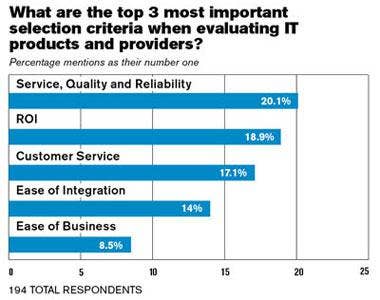Midmarket Wish List
Virtualization has become a top technology priority among midsize enterprises, with many of them going so far as to completely virtualize their entire IT infrastructures.
The midsize enterprise is by far the most exciting market for virtualization technology, according to Keith Norbie, vice president of sales at Nexus Information Systems, a Minnetonka, Minn.-based solution provider.
Midsize enterprises represent the broadest spectrum of virtualization adoption of any customers, from companies dragging their feet to going fully virtual, Norbie said.
’It’s a broader spectrum than at the enterprise level,’ he said. ’Enterprises are all at about the same level of virtualization. In a big enterprise, you hit a glass ceiling. Those companies have a lot of stuff to virtualize. But you also have a lot more operations friction in terms of going beyond a certain level.’
The midmarket virtualization business, however, is one of extremes, Norbie said.
On the one hand, some companies have little or no virtualization technology. ’Never underestimate the ignorance of midsize IT environments,’ he said. ’Some folks are still running Windows NT 3.51 or NT 4.0 and Token Ring.’
At the other extreme are aggressive adopters of virtualization technology who are looking at how to use information technology to develop new markets. ’These companies are virtualizing to reach public clouds, or build private clouds, and access new ways to do disaster recovery and virtual desktops.’
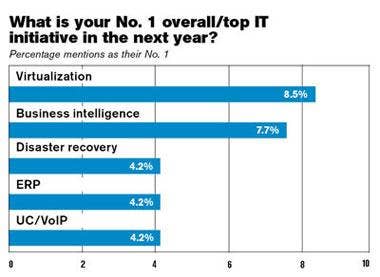
A recent poll of nearly 200 midsize enterprises who attended the Midsize Enterprise Summit, which was organized and hosted by Everything Channel, CRN’s parent company, found that virtualization technology was their main IT priority in the next 12 months.
About 8.5 percent of respondents selected virtualization as their top IT initiative in the next year, followed by 7.7 percent who chose business intelligence, and 4.2 percent each for disaster recovery, enterprise resource planning, and unified computing/VoIP.
When asked what their top hardware initiative for the next year was, 18.8 percent chose virtualization, followed by 9.7 percent who chose SANs, 9.7 percent who chose storage, and 7.5 percent who chose server upgrades.
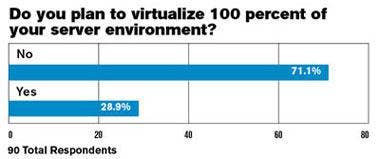
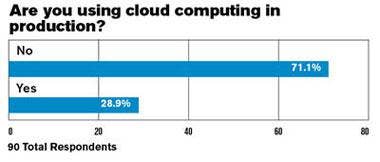
About 29 percent said they plan to virtualize 100 percent of their server environments in the near future, and the same percentage said they have already adopted some form of cloud computing.
One such agressive company is the San Francisco Symphony, an organization that has two physical servers hosting a total of 10 to 12 virtual servers using VMware technology but plans to eventually virtualize its other 30 servers, said CIO Michael Skaff.
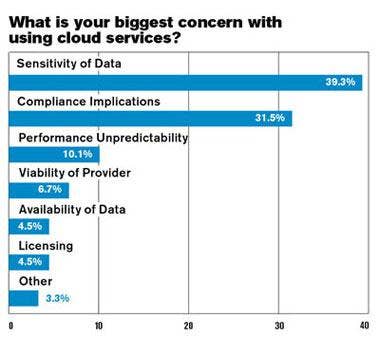
’I’m very serious about driving down the number of servers we have,’ Skaff said. ’We have some servers that are five to seven years old. The maintenance costs are huge, and go up every year.’
The San Francisco Symphony is also planning to replace about 80 percent of its 110 or so desktop PCs with virtual desktops, using either VMware or Citrix Virtual Desktop Infrastructure software in combination with Wyse terminals that cost only $200 to $300, Skaff said.
’We’re looking at manageability,’ he said. ’Virtual desktops seem easier to manage, and VDI means we’ll spend less on refreshing our desktop PCs. We were planning to refresh to Windows 7 in the next few months anyway.’
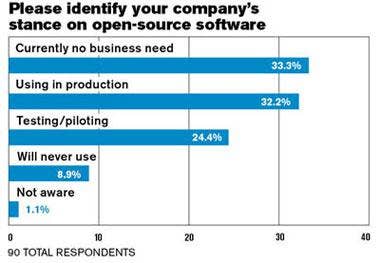
By moving to a completely virtualized server infrastructure, the San Francisco Symphony will be able to expand its IT services without running up against any power and cooling constraints, Skaff said.
’At the end of the day, the data center room is not going to get bigger,’ he said. ’But we are also looking at embarking on our first SAN, so we’ll need a full rack of space for it.’
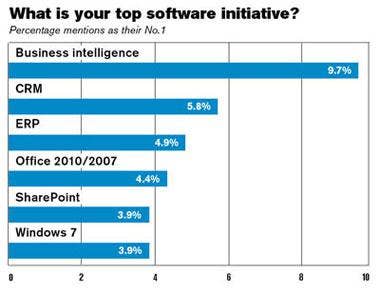
Virtualizing its server infrastructure is the typical first step for a midsize enterprise looking to add flexibility and management to its IT capabilities.
Dean Hitchens, systems administrator at Children’s Hospital of Orange County, an Orange, Calif.-based hospital, said that virtualization in the data center has helped simplify both the deployment of servers and the development of the backup images for those servers.
’[Our] virtualization initiative also aided a great deal to our last disaster recovery rehearsal,’ Hitchens said. ’The other virtualization benefits would be providing lower cost to build our test/lab environment and reduce power, data center footprint space, and cooling.’
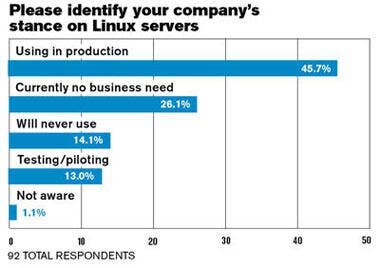
A virtualized server infrastructure is often the base on which midsize enterprises can build other services to better serve their own customers.
The IT manager of a midsize enterprise that provides digital imaging services for insurance companies said his company has already gone to a completely virtual server infrastructure using VMware technology.
The company is now adopting a new SAN based on storage hardware from NetApp to make it easier for its insurance customer user base to manage medical images over the Internet, the IT manager said.
’NetApp has gone the farthest in terms of how its storage works with VMware,’ he said.
